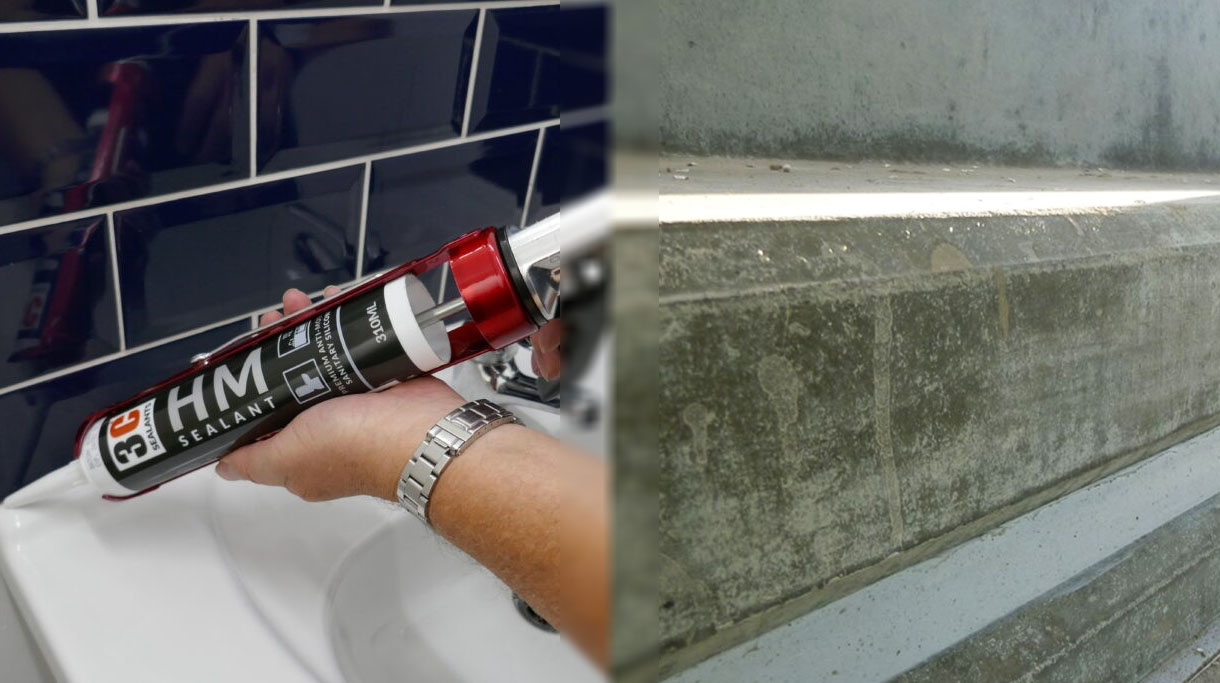Mastic Sealants Quick Guide
Do you ever wonder why there’s so many different types of mastic joint sealants available? Whilst they all pretty much achieve the same thing, there are clear differences in the chemical make-ups and cure systems as well as how they gun out and tool off.
This mastic sealants quick guide was written to help customers with product selection by material, based on the application. We’re frequently told that we have too much choice on our E-Shop website sealantsonline.co.uk and subsequently asked which particular product would suit a specific job.
Here we breakdown the differences in the actual materials used for the most common mastic joint sealants in handy blog form.
Whilst there’s not always a straightforward right or wrong answer to the frequently asked question ‘which mastic sealant should I use?’ the many different raw materials used to manufacture mastic sealants can often confuse customers quite unnecessarily, so we’ll attempt a helpful explanation with this mastic sealants quick guide.
Top tip… If you’re looking at this blog and know what the application is, then quick scan the ‘common uses’ at the bottom of each section for an even quicker guide!
Silicone Sealants (commonly either an acetoxy or neutral cure)
By far the most popular of the products in the mastic sealants umbrella, silicone is considered a very versatile and effective material. With great adhesion to a vast range of construction substrates, silicone sealants remain flexible after full cure and decent quality silicones go on to provide superb movement whilst offering hard-wearing weather resistance to ultra violet and temperature extremes without shrinkage, debonding and/or discolouring etc for many years (some up to 30-40 years) However, this lifespan does very much depend on the correct application of course.
They also offer excellent durability when compared to polyurethane or mastic alternatives, as silicones are not affected by UV or extreme weather and temperature. Furthermore, if applied correctly, a high quality silicone can last for decades without shrinking, cracking or discolouration.
In general, silicone sealants can be split into internal and external ranges, indoor normally thought of as LM or Low Modulus and outdoor normally thought of as HM or High Modulus, although, the actual science of modulus itself, doesn’t dictate the application but serves as an easy guide to one or the other.
Internal (HM) silicones are normally Acetoxy cure sealants which contain the additive to provide a quicker cure time, include fungicide for mould protection but tend to offer slightly poor adhesion unless adequate preparation is considered as well as the use of a primer on occasion. Acetoxys release acetic acid during the curing process making them unsuitable for use with substrates affected by acids such as concrete, natural stones and some metals.
common uses: areas of humidity such as sanitaryware & fittings in bathrooms, toilets and kitchens, floor to wall connections (such as skirting boards) and internal frames etc.
External (LM) silicones are normally neutral cure sealants which automatically elicit a longer cure period by air, but ultimately have better adhesion and low modulus capabilities. External life expectancy is thought of as anywhere between 5 to 20 years.
common uses: weathersealing external door and window frames, expansion joints in brickwork etc. natural stone (both inside & out) cladding, glazing, perimeter flooring, curtain walling, roofing applications etc.
Polyurethane Sealants and Adhesives
Manufactured through the reaction of glycol and an isocyanate, polyurethane is an organic compound with particularly good moisture- and corrosion-resistance characteristics. Thus, polyurethane sealant is useful in both industrial and commercial applications. Additionally, polyurethane is often used as a heavy-duty adhesive. The ability to sand, then varnish or paint made it a suitable alternative to silicone for many applications for many years, although the technology has evolved into Modified Polymer (MS), Modified Silane (MS) or even hybrid sealants that also have damp tolerance and even better movement capabilities.
common uses: boat decking, ship building etc. weathersealing door and window frames, construction/expansion joints in brickwork, cladding, glazing, perimeter flooring, curtain walling, adhesive applications.
see all our polyurethane sealants and adhesives
Polysulfide Sealants
(Also spelt Polysulphide) synthetic rubber based sealant which cures by absorption of atmospheric moisture to form a permanently flexible seal. It is suitable for use within the construction industry on all joints where above average repeated movement is encountered over a wide temperature range. It provides outstanding resistance to weathering and chemical attack from solvent, alkalis, dilute acids, oils and grease. It cures relatively slowly, therefore applications must be restricted to those where little movement will occur before full cure has been achieved.Recently, the technology has evolved into Modified Polymer (MS), Modified Silane (MS) or even hybrid sealants that also have damp tolerance and even better movement capabilities.
common uses: expansion joints in brickwork, external door and window frames, capping glazing applications.
NEW PRODUCT ALERT… 3C Polymer Sealant (Polysuphide sealant alternative) – click here to find out more
see all our polysulfide sealants
Acrylic Sealants
A synthetic protective material used in a wide range of applications. It seals all types of materials to make them gap-free as well as resistant to infiltration from foreign matter. Variations of acrylic sealant are used extensively in the construction industry on residential and commercial properties.
Sealing is also known as caulking; the joints in buildings require a caulked closure to seal gaps and keep each joint waterproof. Closing construction joints with sealant is also done to keep dirt and insects out. Since building joints need to be allowed to have some movement, a flexible sealant must be used. Flexible acrylic sealant has a rubber-like quality to it when it dries; it’s often the preferred choice to seal building joints. Drying in reference to sealants (or caulking)is called curing
common uses: Plasterboard walls, floors/ceilings, dry linings & insulation boards, filling before decorating, intumescent fire seals.
Modified Silane (MS) Modified Polymer (MS) Sealants and Adhesives
The newest kids on the block, these show excellent adhesion on metals, plastics, wood and ceramics used without primers. A conservative life expectancy estimate is 15 to 20 years, although some think it could be as much as 30 years. A lot of modified sealants nowadays are a hybrid of some sort of polymer making them more versatile in application as well as being overpaintable and in some cases damp tolerant or even applicable in wet conditions.
see all our Modified Silane and Modified Polymer sealants and adhesives
Oil-Based Mastic Sealants
Seldom seen or used these days, traditional oil based mastic were the traditional sealant before the formulation of silicon sealants. The mastic remains fluid under a fast forming skin that can be painted over after being allowed to dry.
see all our oil based sealants
Bituminous / Modified Bituminous (MB) Sealants
Bituminous sealants are applied to joints and cracks to prevent the ingress of water, brine and incompressible materials into the pavement structure and thereby extend its service life. Although traditionally hot applied, there are now 1-part, cartridge sealants available for small joints in both horizontal and vertical applications.
common uses: felt / asphalt tucks / reglets, roof flashings, roof edgings, repairs to felt and mastic asphalt, gutter joint repairs.
see all our bituminous sealants
Epoxy Sealants and Adhesives)
Used in the sealant and adhesive industry for it’s amazing cured hardness and strength, epoxy is usually supplied as a 2-part product in a tub or tin but can also be found in a 1-part cartridge type, with a special mixing nozzle to turn the the 2-parts together or gain the correct ratio for a complete substance. Epoxy adhesives are a major part of the class of adhesives called “structural adhesives” or “engineering adhesives” (that includes polyurethane, acrylic, cyanoacrylate, and other chemistries.) Epoxy adhesives can be developed to be used as adhesives for wood, metal, glass, stone, and some plastics. They can be made flexible or rigid, fast setting or slow setting. In general, epoxy adhesives cured with heat will be more heat- and chemical-resistant than those cured at room temperature.
common uses: brick slips, prison cells, secure units, swimming pools, floor joints for heavy traffic, glass balustrades








